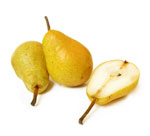Treating Common Elbow Fractures in Children – New Clinical Practice Guideline
Posted by: admin on: January 12, 2012
Evidence-based clinical practice guidelines (CPG) on “The Treatment of Supracondylar Humerus Fractures” has been approved and released by The American Academy of Orthopaedic Surgeons (AAOS).
-Team@CMHF
- Surgeons see several of these types of fractures, especially among children aged between 5 to 9 years, according to Andrew Howard, M.D., pediatric orthopedic surgeon, medical director of the Trauma Program at the University of Toronto Hospital for Sick Children, and chair of the AAOS Work Group responsible for this guideline.
- Children commonly sustain Supracondylar Humerus fractures, which typically occur during play, climbing jungle-gyms, trees, and other structures.
- When children fall they often hyperextend their arms, and falling on a stiff arm often results in fractures just above the elbow joint.
- According to Dr. Howard, as well as the broken bone, the full impact of the fall, may result in “all kinds of consequences.”
- As three main nerves of the arm: radial, ulnar and median, as well as the artery that supplies blood to the forearm and hand run extremely close to the elbow, fractures of this joint can result in circulation problems, and nerve injuries in 10% to 15% of cases.
- The new guideline is the result of a thorough examination of over 350 research investigations on this topic.
- In addition, the guideline contains 14 recommendations regarding how to stabilize the fracture, help circulation problems, as well as how to ensure the quickest and most comfortable recovery for the child.
Important recommendations include:
- Surgeons stabilize the fracture with “two or three laterally introduced pins to stabilize the reduction of displaced, misaligned, Supracondylar fractures of the Humerus.”
- Procedures to restore circulation and blood flow should the artery be torn, severed or stretched. Orthopedic surgeons should first gently realign the arm if no pulse is felt; when the fracture has be aligned to the proper position and established, it is likely that circulation will recover.
- Although, in cases when no pulse in the arm is felt following realignment, which can happen with or without sufficient blood flow, the guideline suggests the surgical “exploration” of the nerves and blood vessels in front of the elbow in children with no wrist pulse, if the patients hand remains cold and undeperfused (insufficient blood flow).
- This, according to the guideline, is to “ensure survival of the tissues in the arm and hand.” In rare cases, such as this additional surgery may be required “to prevent rate, but serious, limb threatening and life threatening consequences.”
The guideline explains:
- If the hand feels warm, has color from circulation that you can see, and the child can move the muscles of the forearm and demonstrate some motion, then there is evidence that tissues are being nourished despite the absent pulse.
- In these cases the guideline does not specifically recommend observation or surgery.
- Dr. Howard said: Ultimately, each physician must evaluate his or her patient’s condition and circumstance and figure out ‘how do I best treat this child.
Search
- drchasrani: Difficult to get such a data, authenticated at that. Try Times of India online library
- rakesh pore: hi, where can i get genuine information about "10 most common drugs sold in india?" i want it for a local project
- nilesh dutta: sir, Plz give detail about MBA Sports Management Thanks and Regards


Leave a Reply